Lanaudiere Select - The First English Language Guide to Quebec's Newest Climbing Area
Quebec has always had an incredible amount of exceptional climbing. Unfortunately, most of it was not easily accessible to the majority of English-speaking climbers; the guidebooks were all in French. With the release of the new English language Lanaudiere Select guide, North American climbers will now get a chance to experience the incredible climbing at Quebec's newest cragging area. We caught up with Steve Bourdeau, the author of the guide and discussed guidebooks, route development and the challenges of publishing the first English language guide to the region.
-
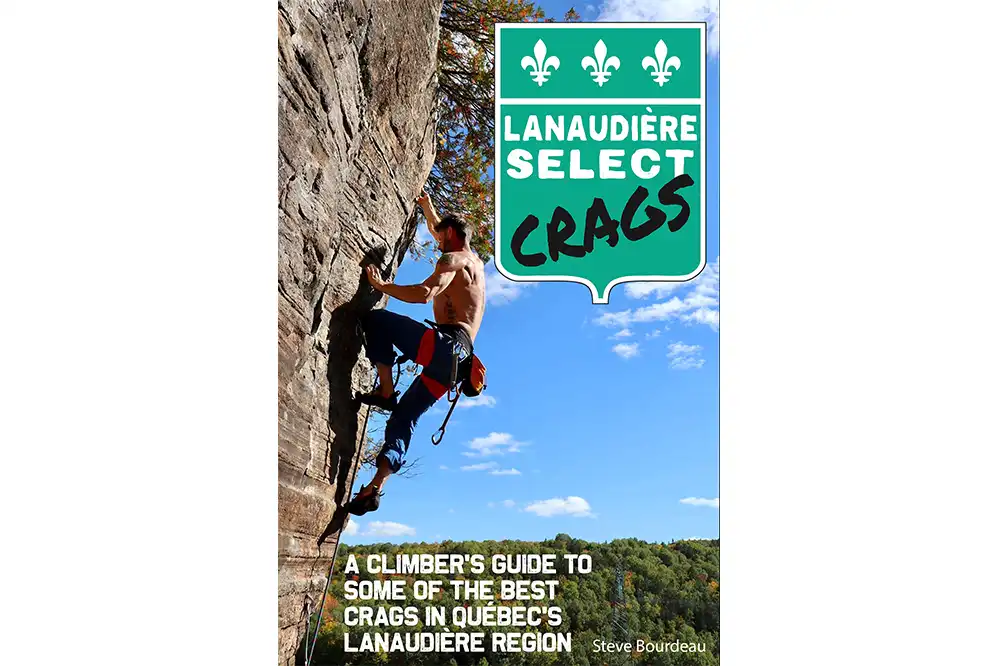
Lanaudiere Select - The First English Language Guide to Quebec's Newest Climbing Area
Congratulations on the new guidebook! Can you tell us a bit about the area, the types of climbs and the approximate distance from Toronto?
Steve: Thanks! All the crags listed in the guidebook are centred around the village of Saint-Côme. It's about an hour north of Montreal, roughly six hours from Toronto, and three hours from Ottawa. The area offers mostly single pitch sport climbing on gneiss-like metamorphic rock, but there's enough good trad and mixed climbing to it's worth bringing your rack along for the trip. You'll find plenty to keep you busy if you're a 5.8 to 5.10 climber, but there are also a bunch of awesome hard routes up to 13c/d. The guidebook includes eight areas and almost 400 routes within a 15-minute driving radius.
The guidebook includes eight areas and almost 400 routes within a 15-minute driving radius.
This is likely the first Quebec rock climbing guide that's published in English. Can you tell us why you chose to do this?
Steve: Yeah, I do believe it's the first of its kind. The idea came to me last season when Saint-Alph officially opened. I always got the same comment from climbers who visited the area for the first time. They would say something like: "Wow, this really looks like a road trip destination!" I also frequently saw Ontario plates in the parking lot throughout the season. When word got out about Saint-Alph on social media, there were even people from the States asking about the place. So, after all that, it just made sense to have a guidebook for the region that would be more welcoming towards the visiting climber rather than just the local. Language can be a touchy subject in Quebec, but overall, the reception was really good. I got a bit of flak about the language, but not enough to dissuade me from publishing it in English.
-
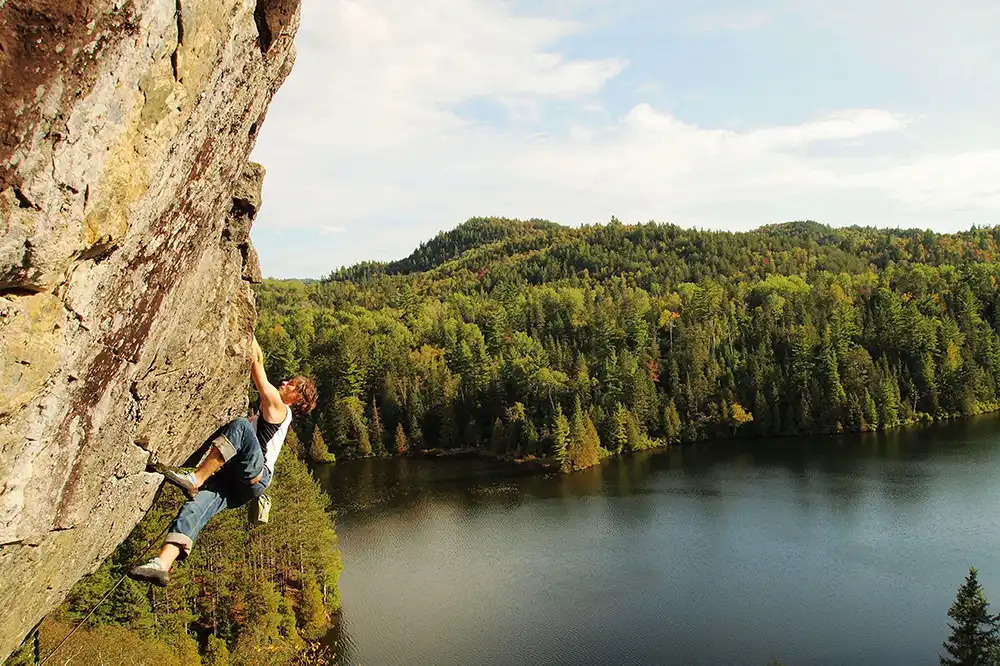
Sam Trépanier climbing À l'abordage 5.12d. Photo: Steve Bourdeau
What kind of amenities (camping, groceries, etc.) should folks expect to find when visiting the area?
Steve: Saint-Côme has pretty much everything you need to keep you happy for a weekend or even for an extended road trip. It has a grocery store, an okay pizza place, and an awesome microbrewery. We have a no-service $5 per night climber's campground with toilets and a covered picnic area at one of the crags. There are also two bigger campgrounds nearby where you can go for a shower or plug in the van. Rest days are great as well. There's a beautiful river for SUP, kayaking, or just swimming. Hiking trails are top-notch, and Saint-Côme has a nice MTB trail system as well.
If you're into FAs and exploration, there's a lifetime's worth of rock around here.
How long have you been working on the guide?
Steve: I've been doing underground topos for crags in the Laurentians and Lanaudière for almost 15 years. Some are just photocopied and stapled together, and others were PDFs. But the work that eventually led to Lanaudière Select started two years ago when we were actively developing Saint-Alph before it opened. I released a French guidebook for Saint-Alph in June of 2021, and I used that as the basis for this one. The bulk of the work on this guidebook was in the fall and early winter. I'm happy it'll be released, but I'm kind of sad to be done with the work. It's a process I really enjoy.
-
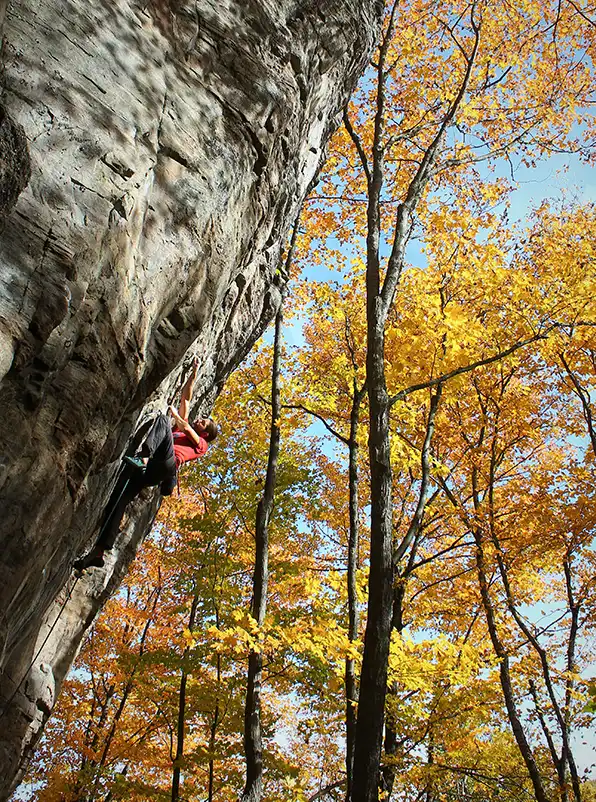
Steve Bourdeau on Poids du Monde 5.12d at Saint-Alph. Photo: Max Labelle
What's the best time of year to visit the area?
Steve: The short answer is from late August through to late October. Bugs are mostly gone, and temps are getting better and better. Fall colours in the region are stunning. That said, the climbing season is fairly long around here, and you can have great climbing days in May, June and July as well.
-
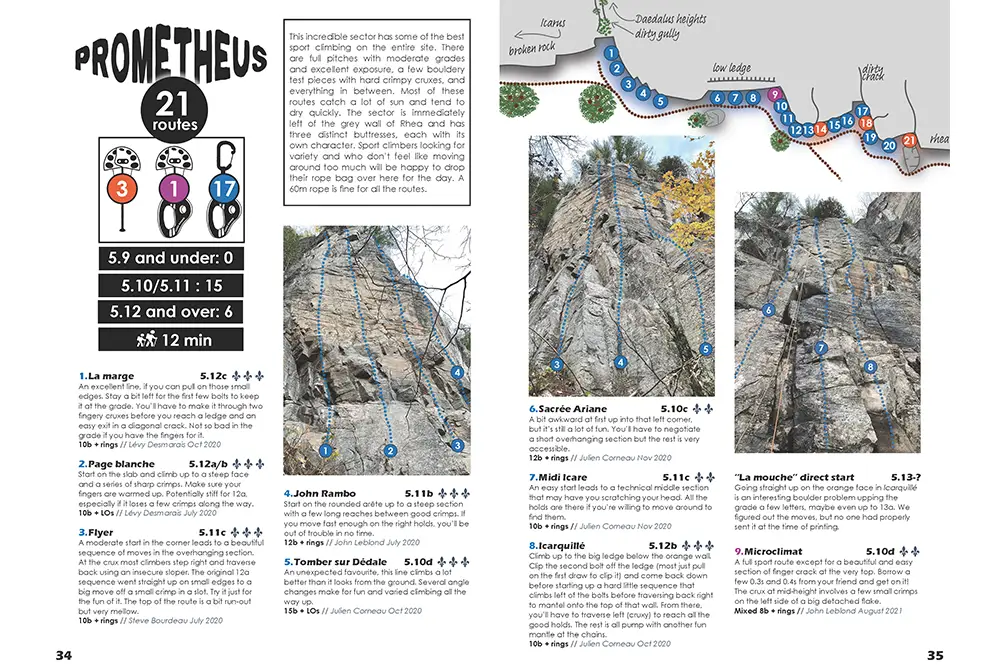
Lanaudiere Select guidebook.
-
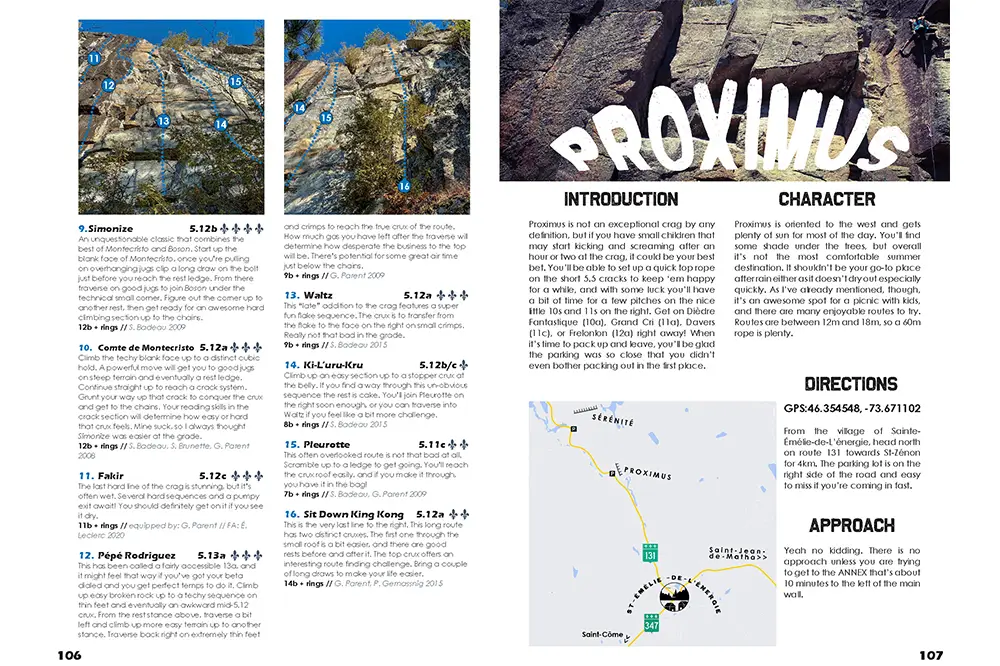
Lanaudiere Select guidebook.
I hear that you are also a route developer. When did you start bolting routes, and what was your motivation for doing so?
Steve: I started bolting routes about ten years ago. It was just the next logical step for me. I was spending a ton of time at these crags, and I had climbed pretty much all the lines within my grade range. At the time, a few of us were regularly climbing with a slightly older route developer who was very active in the region. We learned about route development through his mentorship, which is undoubtedly the best way to understand this stuff. After that, well, route development is a love-it or hate-it thing. When you get the bug, it just becomes addictive. Today, with the growing popularity of climbing and the overcrowding issues that stem from it, I think route development is one of the best ways to contribute to a climbing community.
When did you start climbing?
Steve: In 1997 in Val-David. I was 19, and doing a lot of hiking and climbing was just a logical progression. After a couple of third- and fourth-class hikes in the White Mountains, fifth-class climbing seemed a lot more fun.
-
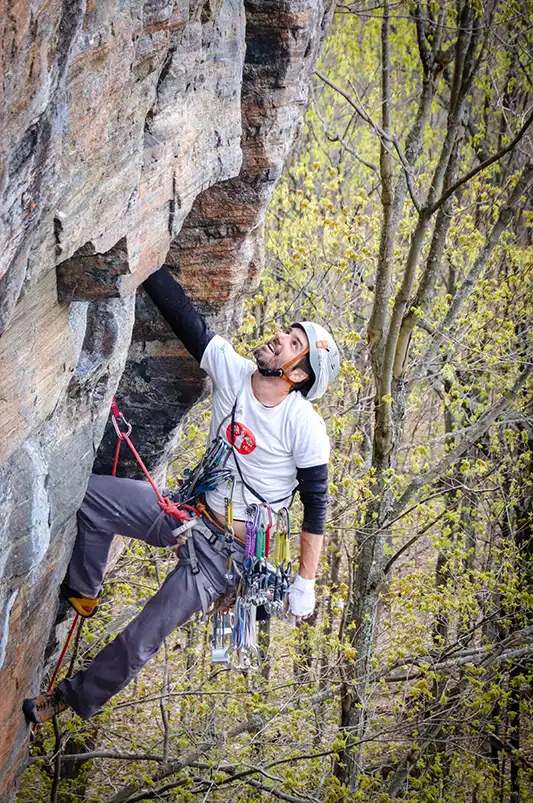
François Yvon on one of the best cracks in Quebec, Sacrifice Saignant 11b at Saint-Alp. Photo: Evan Stassinos
Have you noticed any significant changes to the sport since you started climbing?
Steve: Yes, of course. More than can be easily explored in a short interview. The increase in the sport's popularity has led to several significant changes, many of which are not positive from my point of view. I'll just say that education will be critical in the future to keep crags open and preserve the essence (or the core culture) of the sport. I fear climbing will go down an unfortunate dumbing-down slope if certain changes aren't actively resisted.
But I don't want to sound too much like an old fart lamenting the good old days. The popularity of the sport also means we have legitimacy in the eyes of the general public. This can result in more climbing areas opening as municipalities realize the economic benefits possible from outdoor recreational tourism. When we turn cliffs and forests into parks, we ensure that these areas are not cut down for lumber or bulldozed for condos.
But I don't want to sound too much like an old fart lamenting the good old days. The popularity of the sport also means we have legitimacy in the eyes of the general public. This can result in more climbing areas opening as municipalities realize the economic benefits possible from outdoor recreational tourism. When we turn cliffs and forests into parks, we ensure that these areas are not cut down for lumber or bulldozed for condos.
Are you developing any new areas at the moment?
Steve: Yes, of course. There's a ton of rock in the region. I think the most obvious and easily accessible crags in the area have been developed, but if you're into FAs and exploration, there's a lifetime's worth of rock around here.
-
Lanaudiere Select author Steve Bourdeau bolting a new route.
Any upcoming climbing trips?
Steve: Yep, a short get-back-in-shape trip to the New or the Red at the end of March. I really prefer climbing at the New, but the Red can't be beat when it comes to training fitness.
Where can people get the guidebook?
Steve: You can buy the guidebook directly from my website www.grimpe-saint-alph.com It's in presale right now, and I'll probably start shipping it in the first week of March. Once it's available, you'll be able to order it from online climbing retailers like VertiCall and the Blocshop store as well. You can keep track of news about the region on Instagram (saint_alph_climbing) or Facebook (Grimpe Saint-Alph).
Join the discussion of this and other climbing related stories at www.ontarioclimbing.com/forum/








